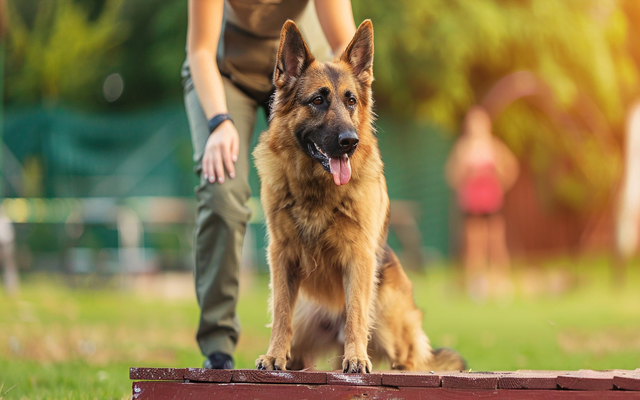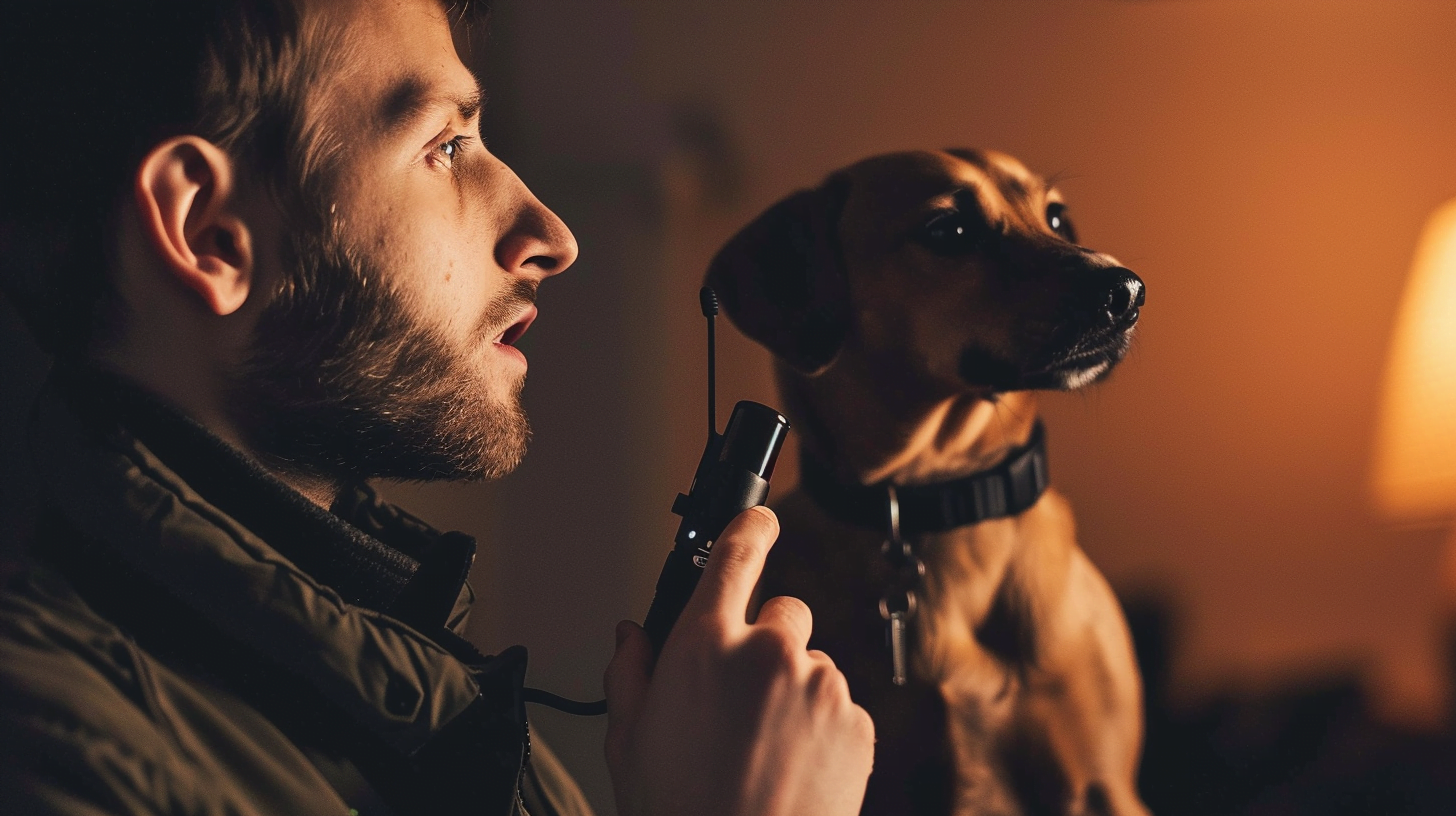Woof! Let’s talk about those mysterious little gadgets known as dog whistles. You know, the ones that make Fido perk up his ears while we humans hear… well, not much. If you’ve ever wondered how they work, or whether they’re the best way to train your furry best friend, you’ve come to the right place.
Let’s face it, sometimes our voices just don’t cut through the chaos of the dog park or a barking frenzy. Dog whistles to the rescue! But before we get into how to use them, let’s explore the fascinating world of dog hearing. Buckle up, because this is going to be one ear-opening adventure!

Inside the World of Canine Hearing
Supercharged Senses
Dogs are practically superheroes when it comes to hearing. They rock a listening range way beyond ours, picking up on sounds we can’t even imagine. Think of it like they have their own secret radio station tuned to frequencies we humans are oblivious to. Their superior hearing didn’t just happen overnight – it has to do with being awesome predators back in their wolf days!
Ear-ie Anatomy

Why are our canine pals such stellar listeners? For starters, their ears are built differently. Those adorable, floppy or perky ears act like satellite dishes, funneling in sound waves. But it’s what happens inside that’s really cool. Their ear canals are deeper, and they have way more muscles to move those ears around – imagine if we could wiggle our ears to pinpoint a sound! Inside, tiny hair cells translate vibrations into signals their brains can understand. Talk about high-tech sensory equipment!
The Sound Spectrum
Ready to get scientific? Sound is measured in something called Hertz (Hz). Us humans can hear between 20Hz and 20,000 Hz. Dogs? They blow us away with a range of around 40 Hz to 60,000 Hz! That means they catch those high-pitched squeaks of a fleeing squirrel and low rumbles of distant thunder way before we even register them. No wonder they react to things we don’t even notice!
The Science of Dog Whistle Communication
It’s Not Magic, It’s Physics!
Dog whistles seem kind of magical, right? But really, they’re all about clever science. Most dog whistles use a special design with a little pea inside. When you blow, the moving air makes the pea vibrate super-fast. This creates an ultrasonic sound – way too high-pitched for our ears, but perfect for your pup’s superior hearing.
The Whistle Spectrum

Not all dog whistles are created equal. Many have an adjustable screw that lets you change the pitch (or frequency) of the sound. This is handy since different dog breeds might be extra sensitive to specific ranges. A high-pitched whistle might be perfect for a tiny terrier but might not register at all for a deep-voiced Labrador.
Beyond Barking
Did you know whistles work great even when your dog is far away, or there’s tons of background noise? That’s because those high frequencies travel a surprising distance and cut through distractions that might drown out your voice. Imagine getting your dog’s attention from across a crowded park on a windy day – a whistle can be a lifesaver!
Real-World Whistle Wins

Dog whistles aren’t just about playtime; they’re used by professionals too! You might see handlers at those fancy obedience trials using whistles. The clear, consistent sound helps dogs focus, even in a bustling environment. Some folks even put whistles to work with working dogs, like herding breeds that need to hear commands over vast distances.
Responsible Use: Ensuring Safety and Wellbeing
Comfort First
Ever held a screaming phone up to your ear? Kind of unpleasant, right? Well, dogs can feel the same way about a whistle that’s too loud or blown too close. It’s important to be respectful of their sensitive hearing. Always start with a whistle on the softer end and blow from a bit of a distance. Watch your pup’s reaction – if they seem distressed, back off and try a lower frequency whistle.
Gradual is Good
Don’t expect your dog to be a whistle master overnight! Begin by showing them the whistle and pairing it with their favorite treats and lots of praise. Once they associate the whistle with positive things, start incorporating short, gentle blows as part of your training routine.
Clear and Consistent
Just like verbal commands, consistency is key to teaching your dog what you want them to do when they hear the whistle. Choose a specific whistle pattern (like one long blast for “Sit,” two short bursts for “Come”), and stick with it! Pair those whistle commands with visual hand signals at first for extra clarity.
Whistle =/= Punishment
It’s tempting to think a whistle can instantly fix barking or chasing issues. But if your dog suddenly gets startled or confused by the whistle, it might be because they’ve had negative experiences with it in the past. Dog whistles should always be about positive reinforcement! Focus on rewarding the behaviors you want, not scaring them away from the behaviors you don’t.
- Can dog whistles harm a dog’s ears? Dog whistles, when used responsibly, should not damage hearing. However, blasts that are too loud, too close, or prolonged can cause discomfort. Always observe your dog for signs of distress.
Beyond the Whistle: Additional Training Tools
A Balanced Approach
Dog whistles are great, but they’re not the only tool in the training toolbox! Verbal commands are important, especially for everyday communication. A clear “Stay!” or “Leave it!” can be crucial. Combining clear whistles with consistent verbal cues makes for a well-rounded, super-communicative dog!
Some dogs might be extra sensitive to the whistle, or it might not be the best solution for stubborn behaviors. When you need more robust training approaches, check out my article on Help for Stubborn Dogs: Training Collars & Positive Solutions.
The Power of Hands
Hand signals are awesome, especially in crowded places where your whistle or voice might get lost. Plus, some dogs are super visual learners. Pair those hand signals with your whistle patterns for double the reinforcement!
Clickers Rock
Remember clicker training? It’s a fantastic way to mark precise moments of good behavior, making training super clear. You can even use a clicker alongside your whistle to make the association even stronger for your pup. Want extra credit? I’ve got some super helpful clicker training resources to share – just ask! (https://karenpryoracademy.com/)
Conclusion and Final Thoughts
So, are dog whistles the magic answer to perfect pup behavior? Not quite. But when used responsibly and paired with a focus on positive training, they can be a powerful tool for communicating with your four-legged friend.
Remember, every dog is different. Some pups might take to a whistle like a duck to water, while others might prefer a mix of methods. It’s more about finding what works for you and your dog while always respecting their amazing sense of hearing.
The Future of Dog Communication?
Who knows, maybe soon we’ll have special dog translator apps, understand every bark and whine! Until then, whistles, along with our voices, hand signals, and loads of understanding, are the keys to building a strong bond with our furry companions.
FAQs
Can dog whistles cause hearing damage in dogs?
When used responsibly, dog whistles shouldn’t harm a dog’s hearing. However, blasting the whistle at close range, using it excessively, or with a very sensitive dog, can cause discomfort.
Are some dog breeds more sensitive to dog whistles than others?
Yes! Smaller breeds tend to have a wider hearing range and might be extra sensitive to higher frequencies. Larger dogs with lower hearing ranges might need a lower-pitched whistle.
How can I use a dog whistle effectively for recall?
Consistency is key! Pair a specific whistle pattern (like one long blast) with high-value treats and lots of praise when your dog comes to you. Practice in controlled environments first, then gradually increase distance and distractions.
Can different whistle frequencies have different effects on dogs?
Absolutely! Experiment with adjustable whistles to find what your dog responds best to. Remember, it’s about what they can hear, not just what the whistle emits.
Can dog whistles be used to deter unwanted behaviors in other animals?
Potentially! Some people use them as pest deterrents. Always research the effects on the specific animal, as some might be more sensitive than dogs.

My job is to make sure every fact is right and every article is a joy to read. I’m kind of like a dog trainer for information – I make it behave!


